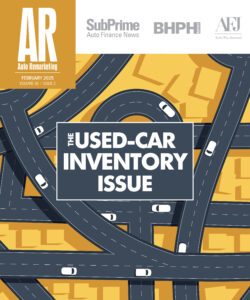Edmunds’ Inside Line: Average Trade-in Age Under 6 Years; Where Are Trades the Youngest?

According to a post on the Inside Line blog from Edmunds.com, the state where dealers saw the youngest trade-ins flowing on to their lots last month was Oklahoma.
The blog entry, written by automotive content editor Warren Clarke, indicates that trade-ins in this state were an average of 4.95 years old in August. Tied for second-youngest were Wyoming and Mississippi, where the average age for trade-ins was at 5.05 years, Clarke wrote.
Texas was next (5.13 years) followed by Alabama (5.14 years). The average age, nationally, for a trade-in during August was 5.88 years.
To read the complete blog entry, visit the following link:
http://blogs.insideline.com/straightline/2012/09/the-list-5-states-with-the-youngest-average-trade-in-age.html.
Trade-ins, of course, are a major stream of used inventory for dealers.
Another important avenue is that of the lease return, something Edmunds delved into last week, when it projected that lease return volume would climb by nearly 500,000 units in 2013.
Specifically, Edmunds chief economist Lacey Plache noted in her analysis that when comparing expectations for 2013 against 2012, the number of lessees returning to market will likely climb by 484,000 next year.
This assumes that “70 percent of 2010 leases were three-year leases, and 30 percent of 2011 leases were two-year leases and that 75 percent of lease expirations result in the lease or purchase of a new car,” Plache wrote.
Edmunds anticipates that more than 2.5 million leases will reach end-of-term next year. That would be the highest number of lease terminations since 2010, creating what could be a flood of potential used inventory for dealers.
When asked what impact the boost in lease returns will have on used supply for dealers — and whether these stores would see some supply relief — Edmunds executive director of statistical analysis Ray Zhou anticipates a beneficial scenario for dealers.
He said "this definitely will increase the supply for the newer used vehicles, plus more trade-ins from new-vehicle buyers (the trade-in percentage for the new vehicle buyers increased from the low 40 percent to close to 50 percent)."
The 2.5 million or so lease terminations projected for next year compare to less than 2 million estimated for 2012, according to data Edmunds compiled into charts on its website. In 2011, the number was about halfway between 2 million and 2.5 million lease terminations.
Just a shade less than 3 million leases came to an end in 2010, after more than 3 million leases drew to a close in 2009.

 View The Latest Edition
View The Latest Edition

